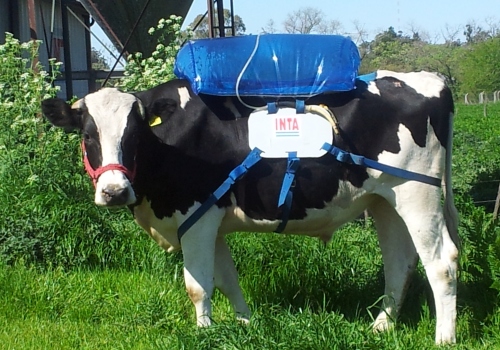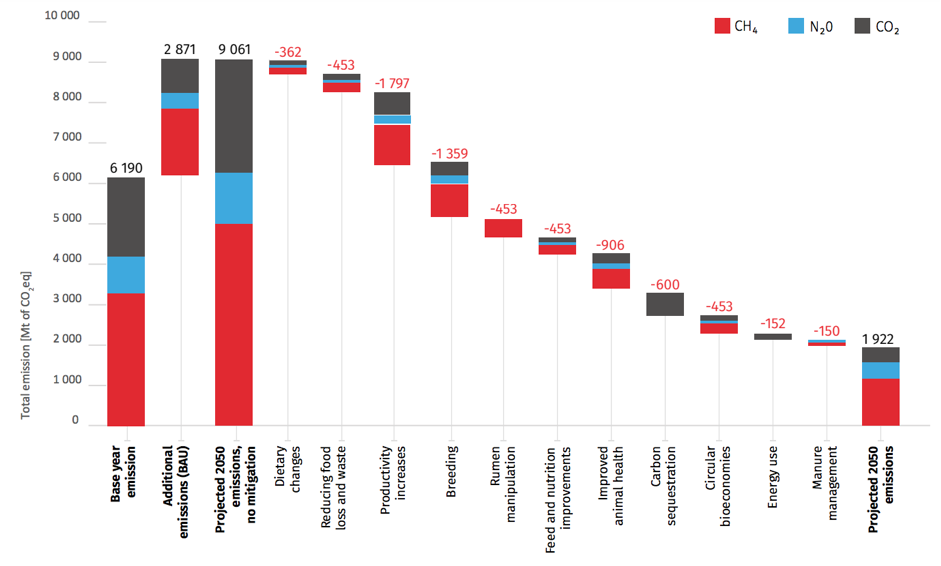The Australian Beef Market in 2025: An Absolute Cracker
In this column in July, the StoneX H2 2025 Australian Cattle & Beef Market Outlook’s bold calls were analysed and assessed for what the final 6...
2 min read
 Matt Dalgleish
:
Mar 14, 2024
Matt Dalgleish
:
Mar 14, 2024

According to a 2023 United Nations Food and Agriculture Organisation report, livestock is a significant source of greenhouse gases, contributing notably to methane, nitrous oxide, and carbon dioxide emissions.
However, the report also provides a pathway for significant reduction in these emissions that does not primarily rely on changes in human dietary patterns. Instead, it emphasises enhancements in productivity, genetic improvements, and better health management of livestock as key strategies.
The chart on emissions shown below from the Food and Agriculture Organisation (FAO) report delineates various interventions and their potential impact on emissions by 2050. Notably, the main emission reductions are forecasted to come from increased productivity, breeding improvements, and enhanced animal health, rather than from changes in diet or food consumption patterns.

Increasing the productivity of livestock is one of the most effective ways to reduce emissions per unit of product (emission intensity). This can be achieved through better feed quality, improved reproductive performance, and reduced mortality and morbidity. By producing more output from the same number of animals, the emission intensity declines. For example, if dairy cows are bred and managed to produce more milk, the methane emitted per litre of milk is reduced. The FAO chart shows that productivity improvements could lead to a significant reduction in emissions, underlining this as a key area for action.
READ MORE: Commbank carbon pilot 'a success'
Selective breeding is another critical component of the pathway to reduce emissions. By choosing animals that are naturally more efficient at converting feed into body weight or milk, for instance, farmers can lower the amount of feed needed for each animal, which in turn reduces the emissions associated with feed production and digestion. In addition to reducing emissions, breeding for traits like disease resistance can decrease the incidence and spread of disease, further reducing the need for emissions-intensive treatments and interventions.
READ MORE: Iceman’s progeny already showing powerful traits in Macka’s low emission vision
It is worth noting that dietary changes, such as a shift towards plant-based diets, are often proposed as a means to reduce emissions. While such changes can have an impact, the FAO report suggests that even without major dietary shifts, substantial reductions in livestock emissions can be achieved through the aforementioned interventions. This approach also avoids the socio-economic challenges and cultural resistance that can accompany suggested changes in dietary habits.
The FAO report provides a nuanced view of how to tackle livestock emissions. It demonstrates that there are multiple pathways to achieving significant reductions, with the most impactful strategies focusing on improving productivity, breeding, and animal health. These interventions offer a pragmatic and effective approach to reducing livestock’s carbon footprint, ensuring that the sector contributes to the global efforts to mitigate climate change while also supporting the livelihoods of farmers worldwide.
This is a clear indication that the agricultural sector can evolve to meet environmental challenges without necessitating drastic changes in consumer behaviour, though a combination of strategies will likely be necessary to achieve the ambitious goals set for 2050.
.jpg)
In this column in July, the StoneX H2 2025 Australian Cattle & Beef Market Outlook’s bold calls were analysed and assessed for what the final 6...
.png)
Each December we save the last article of the year for a bit of a crystal ball gaze, as we try to bring together market fundamentals and work out...
.png)
Australia’s wool market posted another strong performance this week, with all micron categories attracting solid support across the three selling...